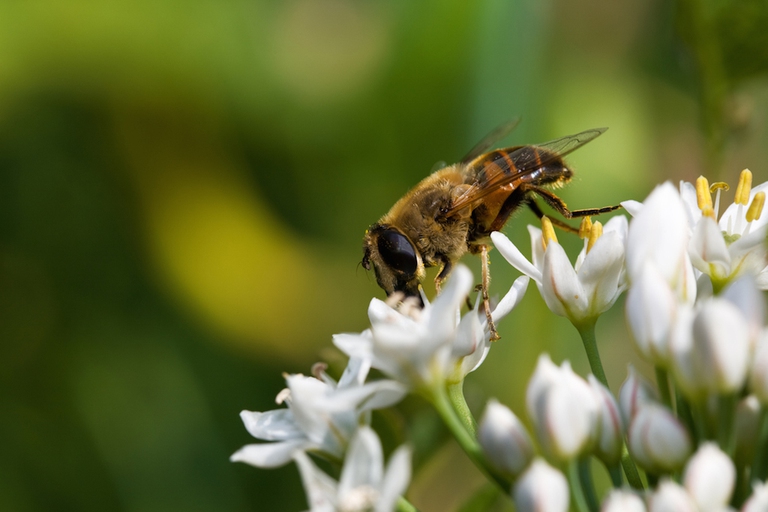
A group of experts in Tokyo suggested pouring radioactive water from Fukushima into the open sea. A marine biochemist explains the consequences of this absurd decision.
30 per cent of the planet needs to be protected to stop precipitous species decline. The UN has set out its aims for the the COP15 on biodiversity scheduled for Kunming, China in October.
To halt the stark loss of biodiversity, at least 30% of the Earth’s surface should be protected to allow rates to stabilise and then increase by the year 2050. This is the mission laid out by the United Nations for COP15, the 15th Conference of the Parties to the Convention on Biological Diversity (CBD) scheduled to take place in Kunming, China in October.
This October, countries will gather to adopt the new framework at the UN Biodiversity Conference #COP15. It’s our mission at the Biodiversity Institute to do our part in biodiversity conservation here locally. Read about it https://t.co/uAEua6PvkZ
— Biodiversity Instit. (@WyoBio) January 16, 2020
The first draft agreement to be discussed in October was published on the 13th of January and is based on a report by the Intergovernmental Science-Policy Platform on Biodiversity and Ecosystem Service (IPBES). The lengthy publication released last May highlights the destructive impact of human activities such as agriculture, deforestation, fishing, hunting, climate change, pollution and the introduction of invasive species on nature. “Three-quarters of the land-based environment and about 66 per cent of the marine environment have been significantly altered by human actions,” the report states. Such is the human impact that in the coming decades the number of endangered species may reach one million out of a total of eight million.
Read more: Animal and plant species declared extinct between 2010 and 2019, the full list
Therefore, the UN’s proposal for COP15 aims to increase the percentage of protected sea and land mass globally to 30 per cent. Currently, only 17 per cent of land is listed as protected, the equivalent of 20 million square kilometres (slightly less than the US and Canada put together), and 10 per cent of the area covered by water.
An important first step. Now onwards towards approval in #COP15. #CampaignforNature #protect30x30 https://t.co/9aW4ysBj2P
— Zdenka Piskulich (@zpiskulich) January 15, 2020
“The 30 per cent aim is ambitious”, David Ainsworth told French newspaper Le Monde, “but also a contemplated choice”. Ainsworth is the spokesperson for the CBD, the body in charge of organising COP15 in Kunming. “Over the course of a year our experts have analysed governments’ requests as well as the scientific information at our disposal, also consulting civil society. Decisions were made based on a consensus about the numbers at hand”.
It should be noted that a third of the 30 per cent of protected land should fall under the status of absolute protection, which means that in these areas “no human activity would be permitted, including fishing and agriculture, regardless of whether they’re regulated,” Ainsworth adds.
It’s expected that the link between climate change and biodiversity loss will be made official, therefore set in stone at COP15. The text to emerge out of the conference is expected to clearly refer to the 2015 Paris Agreement. The UN will also propose to at least halve pollution caused by pesticides, plastic waste and other substances by 2030.
Towards a #ParisAgreement for biodiversity? https://t.co/JRw1m7s4bx #10issues2020 @UNBiodiversity #COP15 #Kunming #Biodiversity2020 pic.twitter.com/MM2qGq5mTF
— EP Research Service (@EP_ThinkTank) January 15, 2020
Numerous preliminary sessions will take place prior to the meeting in Kunming. The hope is to achieve a better result compared to the COP25 on climate change, in which countries such as Brazil blocked a robust deal from emerging. The biodiversity conference won’t need the backing of Donald Trump, given that the US is the only country in the world aside from Vatican City not to have ratified the CBD. Therefore, it won’t take part in COP15 unless it chooses to be a third party observer.
Siamo anche su WhatsApp. Segui il canale ufficiale LifeGate per restare aggiornata, aggiornato sulle ultime notizie e sulle nostre attività.
![]()
Quest'opera è distribuita con Licenza Creative Commons Attribuzione - Non commerciale - Non opere derivate 4.0 Internazionale.
A group of experts in Tokyo suggested pouring radioactive water from Fukushima into the open sea. A marine biochemist explains the consequences of this absurd decision.
The decline in grey and humpback whales in the Pacific and Atlantic Oceans has been traced to food shortages caused by rising ocean temperatures.
The United Nations has launched a major international alliance for ocean science, undertaking a mission close to all our hearts.
The cargo ship that ran aground off the coast of Mauritius on 25 July, causing incalculable damage, has split in two and its captain has been arrested.
The largest coral reef in the world is severely threatened by climate change, but researchers are developing strategies that could contribute to saving the Great Barrier Reef.
Seychelles have extended its marine protected area, which now covers over 400,000 square kilometres, an area larger than Germany.
Norwegian oil giant Equinor had pulled out of drilling for oil in the Great Australian Bight, one of the country’s most uncontaminated areas. A victory for activists and surfers who are now campaigning for the area to be protected forever.
Ocean warming has risen to record highs over the last five years: just in 2019 the heat released into the world’s oceans was equivalent to that of 5-6 atomic bombs per second. The culprit, no doubt, is climate change.
Refusing the anthropocentric vision and respecting the laws of ecology is the only way to safeguard the future of our and all other species, Sea Shepherd President Paul Watson argues in this op-ed.








